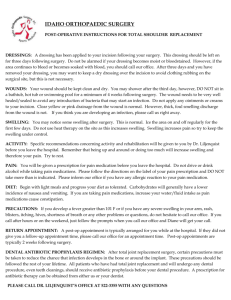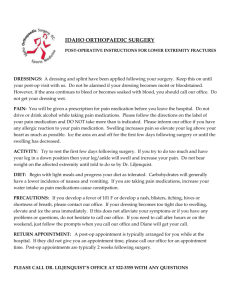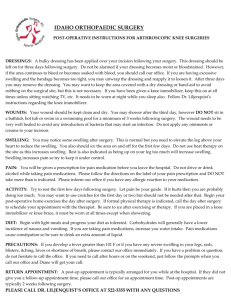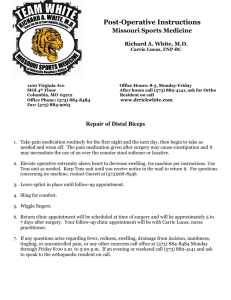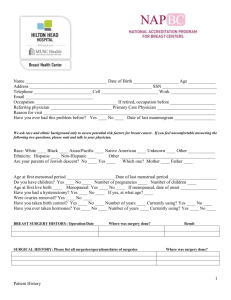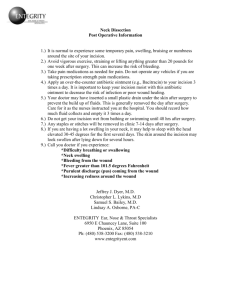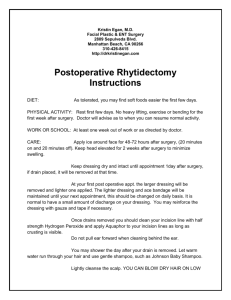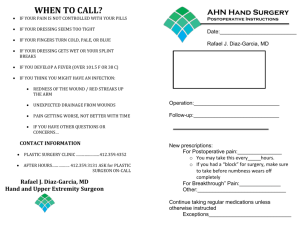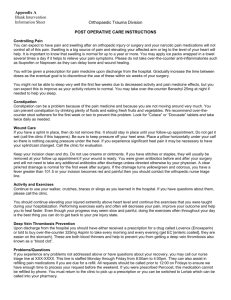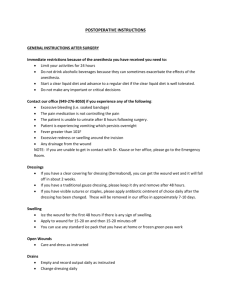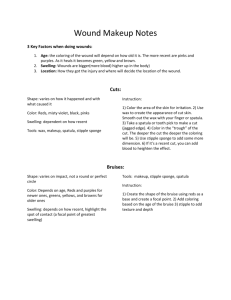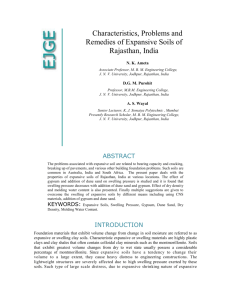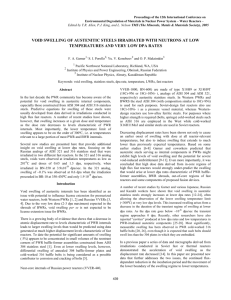Post-Operative Instructions - Total Hip Replacement
advertisement
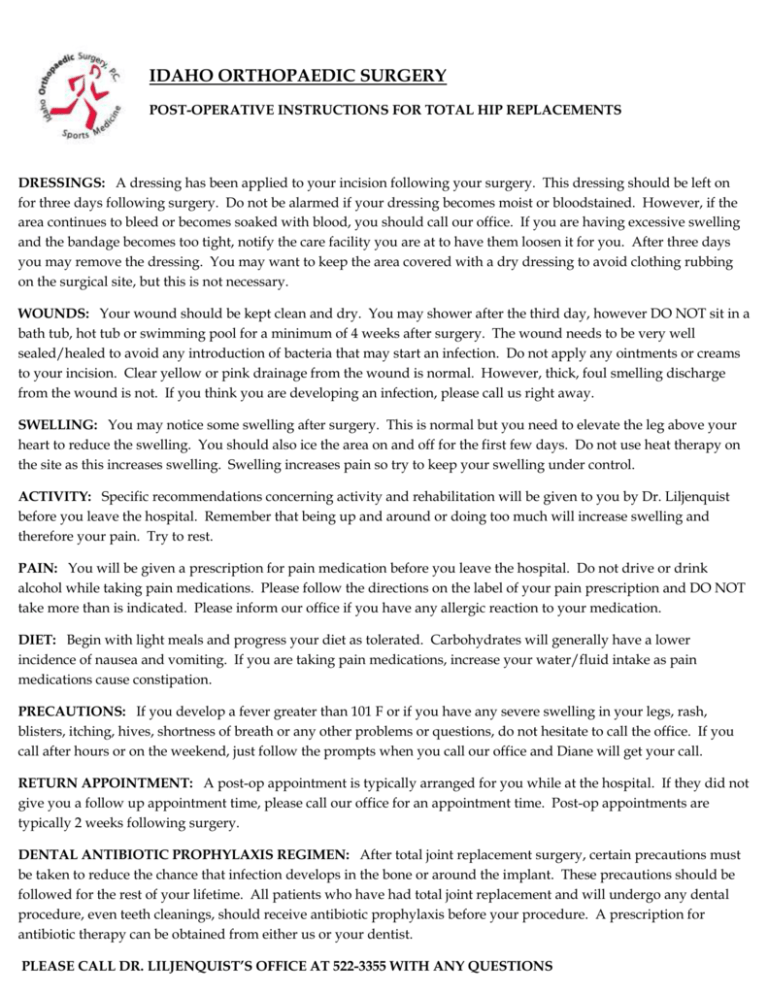
IDAHO ORTHOPAEDIC SURGERY POST-OPERATIVE INSTRUCTIONS FOR TOTAL HIP REPLACEMENTS DRESSINGS: A dressing has been applied to your incision following your surgery. This dressing should be left on for three days following surgery. Do not be alarmed if your dressing becomes moist or bloodstained. However, if the area continues to bleed or becomes soaked with blood, you should call our office. If you are having excessive swelling and the bandage becomes too tight, notify the care facility you are at to have them loosen it for you. After three days you may remove the dressing. You may want to keep the area covered with a dry dressing to avoid clothing rubbing on the surgical site, but this is not necessary. WOUNDS: Your wound should be kept clean and dry. You may shower after the third day, however DO NOT sit in a bath tub, hot tub or swimming pool for a minimum of 4 weeks after surgery. The wound needs to be very well sealed/healed to avoid any introduction of bacteria that may start an infection. Do not apply any ointments or creams to your incision. Clear yellow or pink drainage from the wound is normal. However, thick, foul smelling discharge from the wound is not. If you think you are developing an infection, please call us right away. SWELLING: You may notice some swelling after surgery. This is normal but you need to elevate the leg above your heart to reduce the swelling. You should also ice the area on and off for the first few days. Do not use heat therapy on the site as this increases swelling. Swelling increases pain so try to keep your swelling under control. ACTIVITY: Specific recommendations concerning activity and rehabilitation will be given to you by Dr. Liljenquist before you leave the hospital. Remember that being up and around or doing too much will increase swelling and therefore your pain. Try to rest. PAIN: You will be given a prescription for pain medication before you leave the hospital. Do not drive or drink alcohol while taking pain medications. Please follow the directions on the label of your pain prescription and DO NOT take more than is indicated. Please inform our office if you have any allergic reaction to your medication. DIET: Begin with light meals and progress your diet as tolerated. Carbohydrates will generally have a lower incidence of nausea and vomiting. If you are taking pain medications, increase your water/fluid intake as pain medications cause constipation. PRECAUTIONS: If you develop a fever greater than 101 F or if you have any severe swelling in your legs, rash, blisters, itching, hives, shortness of breath or any other problems or questions, do not hesitate to call the office. If you call after hours or on the weekend, just follow the prompts when you call our office and Diane will get your call. RETURN APPOINTMENT: A post-op appointment is typically arranged for you while at the hospital. If they did not give you a follow up appointment time, please call our office for an appointment time. Post-op appointments are typically 2 weeks following surgery. DENTAL ANTIBIOTIC PROPHYLAXIS REGIMEN: After total joint replacement surgery, certain precautions must be taken to reduce the chance that infection develops in the bone or around the implant. These precautions should be followed for the rest of your lifetime. All patients who have had total joint replacement and will undergo any dental procedure, even teeth cleanings, should receive antibiotic prophylaxis before your procedure. A prescription for antibiotic therapy can be obtained from either us or your dentist. PLEASE CALL DR. LILJENQUIST’S OFFICE AT 522-3355 WITH ANY QUESTIONS
